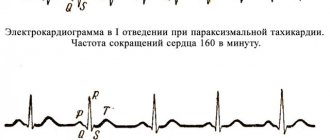Splenomegaly, or a condition where the spleen is enlarged, –
not a diagnosis, but a symptom of another, usually dangerous disease. To treat this condition in an adult, you need to know exactly what reasons led to such symptoms. Without a reliable diagnosis, it is impossible to determine the provoking factor, as well as treatment of an anxiety state. Under no circumstances should you decide on your own what to do or take medications on the advice of a pharmacist at a pharmacy or random people.
Human spleen
This important organ is located between the 9th and 11th ribs. The spleen is in a vertical position on the left side of the peritoneum. Externally, the organ resembles an oval. By and large, the spleen is the largest lymph node, which performs a very important function - it cleanses the blood of harmful microorganisms. At the same time, blood clotting and other metabolic processes occur.
The spleen performs very important tasks:
- Detects foreign antigens and produces antibodies.
- Dissolves solid particles formed from burns and other injuries.
- Takes part in the formation of immunoglobulin.
Enlarged spleen
This disease is called splenomegaly. It is quite difficult to detect a slight change in the size of an organ, so the disease is rarely diagnosed in the earliest stages. As a rule, patients learn about the disease during examination of other organs.
The reasons for an enlarged spleen can be very diverse. As a rule, splenomegaly is not an independent disease. Changes in the size of the spleen are a consequence of other processes in the body. Despite the fact that it is quite difficult to identify the disease, there are signs that may lead a person to think that it is time to visit a doctor or at least undergo a full examination of the body.
Symptoms
Symptoms of an enlarged spleen are strongly tied to the underlying pathology that caused the organ to grow in size. Most often, as doctors note, the patient complains not about the fact that his organ is slightly enlarged, but about the primary pathology. For example, with inflammatory diseases, weakness, diarrhea, nausea, vomiting, fever, etc. are possible.
Among the signs of an enlarged spleen, there are often complaints of pain that is localized on the left. The pain is usually aching, bursting, and not sharp. If there is no inflammation, then intoxication syndromes are either completely absent or very mildly expressed.
If the spleen is enlarged, patients may complain of pale skin, sometimes with a bluish tint, decreased appetite, and insufficient performance. Some diseases are additionally accompanied by liver enlargement, which is characterized by pain similar in description, but localized on the right side.
Symptoms
There are a number of signs that you should not turn a blind eye to. Therefore, you need to consult a doctor if:
- Constant pain or tingling under the left rib when inhaling. In this case, the pain may radiate to the shoulder, left arm or lower abdomen.
- The appearance of ulcers on the skin, when they turn pale or yellow. Typically, the inner parts of the cheeks, feet and tongue are affected.
- Fatigue.
- The appearance of hematomas, slight contusions and bruises even with gentle pressure on one or another part of the body.
- The formation of minor bleeding without any reason for its appearance.
- Excessive sweating.
- Low blood pressure and hemoglobin levels.
- The appearance of a very unpleasant odor from the mouth.
- Nausea and vomiting.
- Elevated body temperature.
- Constant discomfort in the stomach and intestines. Patients complain of bloating and a feeling of “fullness.” To feel full, a person needs much less food.
- Increased sweating, especially at night.
Considering the causes and symptoms of an enlarged spleen, it is very difficult to correlate these symptoms specifically with the development of splenomegaly. A change, even a minor one, in this organ may indicate dozens of ailments, which only a specialist can identify.
It is worth considering that the disease can develop against the background of frequently recurring viral, fungal and other diseases. Therefore, when talking about the reasons for an enlarged spleen in adults, one must take into account that if the immune system is weakened, there is a high risk of contracting this unpleasant disease. Therefore, it is important to adhere to a healthy lifestyle. For those whose protective functions are weakened, it would be a good idea to take a course of immunomodulators.
Treatment of an enlarged spleen with folk remedies
The infectious form is treated comprehensively, using antibiotics, modulators and stimulants of the immune system. Gastroenterologists hospitalize the patient only in exceptional cases of acute manifestations of splenomegaly. If necessary, surgical intervention is indicated.
The non-inflammatory form is amenable to successful therapy with a favorable prognosis. Splenomegaly of non-infectious etiology is treated with gentle, proven phytotherapeutic agents. Herbal infusions and decoctions, applications and compresses are popular.
Folk recipes
Treatment of an enlarged spleen in an adult begins immediately after identifying the causes of the painful condition. The action of these folk remedies is aimed at reducing the size of the organ. To relieve the inflammatory process, ointments, tinctures and casseroles are prepared.
Honey ointment
A healing, highly effective, very ancient medicine based on butter, ginger root and bee honey.
- Melt 2 tbsp. l. butter in a water bath.
- Rub melted butter into 50 g of ginger on a fine grater.
- Pour the mixture into 2 tbsp. l. thin honey, and thoroughly grind to a cream-like state.
Rub honey ointment into the area of the affected organ before going to bed until it runs out. It turns out to be effective not only for splenomegaly, but also in the treatment of other internal organs, for example, kidney cysts. No special storage conditions are required for the ointment.
Raisin tincture
Getting ready before bedtime.
- Wash 50 g of dried grapes, add grape vinegar (200 ml) and leave overnight.
- In the morning, eat 5-6 berries on an empty stomach with 2 tbsp. l. vinegar tincture.
The course of treatment is 25-30 days.
Radish casserole with horseradish root
One large radish (any kind, but preferably black) is washed and the core is cut out of the root vegetable.
- Mix 3 tbsp. l. finely chopped horseradish root with 2 tbsp. l. honey
- Place the honey and horseradish mixture into the drained radish.
- Bake in the oven until done.
For 10 days, eat 2 tbsp in the morning. l., and before bedtime - 1 tbsp. l. casseroles. Keep refrigerated. Do not cook in advance, but bake one radish at a time. This remedy is also successfully used in the treatment of symptoms of pyelonephritis in women. To prevent the development of neoplasms, porridges, tinctures and decoctions are prepared.
Pea porridge
- Rinse and soak for 7-8 hours 7 tbsp. l. regular peas.
- Boil 250 ml of water and cook the peas until tender without adding salt.
- Cool and visually divide into 4-5 parts.
- Eat the first portion before 6 a.m., and the last portion no later than 3 hours before bedtime.
Causes of enlarged spleen
As mentioned earlier, anything can trigger the appearance of splenomegaly. For example, a change in the size of this organ is sometimes associated with the appearance of malignant neoplasms, increased blood flow, infiltration of the organ, inflammatory ailments, diseases associated with changes in cell structure and much more.
The most common causes of an enlarged spleen include:
- Chronic hepatitis, alcoholism.
- Lymphoma, leukemia and other types of blood cancer.
- Infectious diseases (malaria, AIDS, mononucleosis and others).
- Thrombosis and heart failure.
- Increased accumulation of lipids (in medical practice this disease is called Gaucher disease).
- Lupus, rheumatoid arthritis and other inflammatory diseases.
- Polycythemia vera.
- Cysts.
Speaking about enlarged spleen, the causes and treatment of this disease, it is worth considering that in normal condition the weight of the organ should be no more than 150 g with a width of 3-4 cm. If its weight increases even to 200 g, then in this case the doctor diagnoses splenomegaly .
A change in the size of the spleen may be a reaction to disruption of the functioning of other, not necessarily neighboring, organs. Venous stagnation of blood can also lead to this phenomenon. Very often, against the background of an enlarged spleen, a change in the size of the liver lymph nodes occurs.
If splenomegaly is observed in a pregnant woman, it is most often associated with a change in hemoglobin levels (indicators decrease significantly). The disease can also be caused by parasites (for example, helminths) that enter the human body.
What is the spleen and what does it do (function)?
The spleen is an important organ in the human body that has many responsibilities.
- This is a large blood filter that helps remove old and damaged red blood cells and bacteria. The spleen destroys old red blood cells, aging and damaged platelets.
- It is also part of the lymphatic system and produces lymphocytes, a type of white blood cell that is part of the immune system whose function is to prevent and fight infection.
- The spleen acts as a storage facility for red blood cells and platelets.
- The organ is responsible for the storage of blood and platelets.
- The spleen regulates the metabolism of carbohydrates, iron, stimulates the synthesis of proteins, blood clotting factors and other processes.
- The endocrine function of the spleen is the synthesis of erythropoietin, which stimulates erythropoiesis.
Reasons for changes in spleen size in children
If a child suffers from a congenital disease associated with a change in the size of this organ, then, as a rule, this does not pose a great danger to the baby. Splenomegaly in the smallest children is diagnosed very quickly, so the doctor can observe the development of the pathology.
If we talk about other reasons for an enlarged liver and spleen in a child, then they are the same as for adults. However, in this case, it is worth considering that if a woman suffers from an infectious or chronic disease, then there is a high probability that it will be passed on to her child. If we are talking about newborn babies, then a change in the size of the spleen is often associated with a decrease in the protective functions of the fragile organism. It is also necessary to make sure that the baby does not suffer from blood pathologies, which are also often congenital.
During adolescence, children often begin to try alcohol and smoke cigarettes. If low-quality alcohol-containing products, nicotine and junk food enter a young body, this can also lead to splenomegaly.
When considering an enlarged spleen in children, the causes and treatment of the disease, it is worth considering that changes in the size of this organ may be associated with some diseases:
- Viral and infectious diseases.
- Rubella and other “childhood” diseases.
- Malaria.
- Congenital heart defects.
- Diseases associated with liver dysfunction.
Symptoms of an enlarged spleen
Splenomegaly has no specific symptoms. Vague abdominal pain and bloating are the most common symptoms. However, there are also non-specific symptoms of an enlarged spleen. Some people with a very enlarged spleen complain of early satiety (anorexia) and stomach symptoms (reflux).
In addition, many of the symptoms associated with an enlarged spleen are caused by the underlying cause of splenomegaly. These may include: fever, night sweats, pallor, general weakness, fatigue, easy bruising, weight loss.
When to see a doctor?
The fact that a person has an enlarged spleen can be diagnosed by doctors of different specialties. For example, hematologists (doctors who specialize in treating blood disorders), oncologists (cancer specialists), and gastroenterologists (specialists in liver and gastrointestinal diseases). All of these doctors care for patients whose spleen is enlarged in response to another disease.
Depending on the cause, people with splenomegaly may need to see a doctor urgently if they have: bleeding, an infection that cannot be treated at home, or severe abdominal pain.
Diagnostics
To most accurately determine the causes of enlarged liver or spleen, it is necessary to perform a CT scan. Most often, patients conduct such studies when they suspect they have completely different ailments.
If the patient has signs of splenomegaly, then the doctor initially palpates the upper area of the peritoneum. With a deep breath, the specialist will be able to “grope” the internal organ that has increased in size. If there is a suspicion that a person suffers from splenomegaly, then additional studies are carried out. First of all, you need to donate blood. The specialist will determine the level of leukocytes and platelets. In some cases, additional chemical analysis and studies of the quality of liver function may be required.
It is also recommended to perform an ultrasound of the entire abdominal cavity, angiography, etc. To assess the causes of spleen enlargement in adults and treat this disease, doctors conduct additional studies:
- Lymph node biopsy. This test is performed if the doctor suspects that a change in the size of the spleen is caused by lymphoma.
- If an infectious disease is suspected, the source of the disease must be identified.
- Bone marrow biopsy. This study may be required if there is a possibility that the pathology was caused by leukemia, Gaucher disease or the appearance of infectious mycobacteria.
Additionally, a biopsy of the spleen itself may be required. This study is carried out due to suspected bleeding.
So, now the symptoms and causes of an enlarged spleen are known. Treatment of the disease will be discussed further.
Causes
The causes of splenomegaly are very diverse. This is explained by the fact that the spleen is an important organ of the immune system, without which its normal functioning is impossible. Many diseases are accompanied by an increase in blood flow intensity. This leads to a jump in size.
The most common causes of an enlarged spleen are:
- various pathologies of an infectious nature, due to which the load on the organ increases and, as a result, its increase occurs (not only viral and bacterial infections are taken into account, but also fungal and protozoal ones);
- various autoimmune pathologies lead to the development of splenomegaly, as the intensity of the phagocytic function in the organ increases;
- with an enlarged spleen, one can suspect a myeloproliferative disease, which is characterized by malignant degeneration of bone marrow cells, as well as disruption of hematopoietic processes, including in the affected organ;
- in adults and children, the cause can be a variety of neoplasms, regardless of their location and etiology;
- splenomegaly often indicates hematological disorders;
- various metabolic pathologies are also accompanied by this syndrome;
- if blood cannot fully flow out of the venous bed, this can also lead to the development of the disease.
The causes of the pathology are very diverse, which significantly complicates its treatment.
Selection of therapy
In order to get rid of the disease, it is very important to understand why exactly the change in the internal organ occurred. If cirrhosis has led to splenomegaly, then immediate measures must be taken to treat this pathology. Until the underlying disease is cured, it is impossible to talk about complete recovery.
Most often, treatment of the spleen is carried out with antibiotics or chemical therapy. However, in some situations this is not enough. In this case, you cannot do without surgery.
Treatment of splenomegaly
Treatment of splenomegaly is aimed at treating the underlying disease (treatment of an infectious-inflammatory process, reducing pressure in the veins of the abdominal cavity, chemotherapy for tumors, etc.). Surgical removal of an enlarged spleen (splenectomy) is sometimes indicated, for example, for idiopathic thrombocytopenic purpura. In this disease, removal of the spleen leads to a rapid restoration of platelet levels in the blood. Splenectomy is also performed for Gaucher disease, hairy cell leukemia, and thalassemia. After such an operation, a person’s susceptibility to pneumococcus, meningococcus and Haemophilus influenzae increases, so such patients are vaccinated against the corresponding microorganisms.
Splenectomy
This type of operation is called splenectomy. This type of surgery may be required for leukemia, telassemia, splenic thrombosis and many other pathologies. In this case, surgery is less risky.
After surgery, it is very important to undergo a course of vaccinations. This is explained by the fact that the body of people who have undergone this type of operation is greatly weakened. A person becomes defenseless against pneumonia, meningitis and influenza. Therefore, it is recommended to be sure to protect yourself from these viral bacteria.
Survey
First of all, the doctor collects the patient’s medical history. He asks about when the pain first appeared, whether there have been any injuries in life, operations, or the presence of chronic diseases. Conducts an examination and palpates the abdomen. On examination, pale skin is observed, the patient complains of profuse sweating and fatigue. It is not always possible to detect splenomegaly by palpation. It could be a completely different pathology. Therefore, if a doctor suspects an enlarged spleen, he prescribes an ultrasound examination.
According to indications, computed tomography (CT) of the abdominal cavity or magnetic resonance imaging (MRI) is prescribed. If the results are questionable and the patient has no clinical symptoms, a re-examination is scheduled after six months. A general blood test and biochemical blood test are required. Laboratory analysis makes it easier to understand what exactly is wrong in the body.
Useful tips
Regardless of whether the operation was performed or the doctor limited himself to drug treatment, it is important to follow several tips:
- Start eating healthy, so you need to give up fatty, fried and smoked foods. You also need to avoid alcohol.
- The patient should eat 5-6 times a day, but in small portions.
- Avoid fast and sudden movements. Falls and even minor injuries can be dangerous for people in this condition.
- Spend as much time as possible outdoors.
ethnoscience
If we talk about traditional methods of treatment, then you can cope with problems with the spleen using:
- Harvesting calendula and yarrow.
- Honey.
- Chicory.
- Tinctures based on hop cones.
- A decoction of plantain, sage and nettle.
- Cranberry, carrot, apple and other natural fruit drinks.
- St. John's wort tinctures.
- Sea buckthorn.
- Decoctions of violets or strawberries.
- Milk with propolis.
Some people prepare an ointment from honey and ginger and smear it on the skin at night. However, you need to understand that for different reasons for an enlarged spleen, the treatment will be different. Traditional medicine does not always have a positive effect. If the operation is not performed in a timely manner, then such “home” treatment will only lead to a worsening of the condition.
Possible complications
In rare cases, the size of the spleen may return to normal. This is possible if the patient promptly seeks help and undergoes diagnostic tests. As a rule, we can talk about complete restoration of the spleen if a person suffers from mononucleosis. As soon as the main ailment is cured, the functioning of the internal organs will return to normal.
If the spleen is removed, the person becomes very susceptible to viral infections. Some people experience abnormal bleeding. If a person gets injured, this will also have a negative impact on health.
Prevention
Preventive measures do not always help avoid illness. In this case, everything depends on the primary disease that provokes the symptoms. As a rule, doctors recommend stopping smoking and drinking alcohol. This will help avoid cirrhosis of the liver, which often causes splenomegaly.
If a person plans to vacation in hot countries, especially in endemic areas, then it is imperative to get vaccinated against malaria.
You can avoid splenic rupture if you do not engage in strenuous physical activity.
Forecast
The prognosis depends on the disease that causes splenomegaly. The process of hematopoiesis is always disrupted. Not only pathological but also healthy cells are destroyed. Platelets, red blood cells and white blood cells are at risk. A person becomes ill with anemia when there is a sharp decrease in red blood cells. The immune system is destroyed when white blood cells are destroyed, which leads to frequent infectious diseases. A lack of platelets reduces blood clotting.
It is difficult to predict the prospects for consequences, since this condition is multifactorial.
Splenomegaly is not an independent disease, so it is important to identify the causes of pain in the left hypochondrium in a timely manner in order to begin effective therapy.











